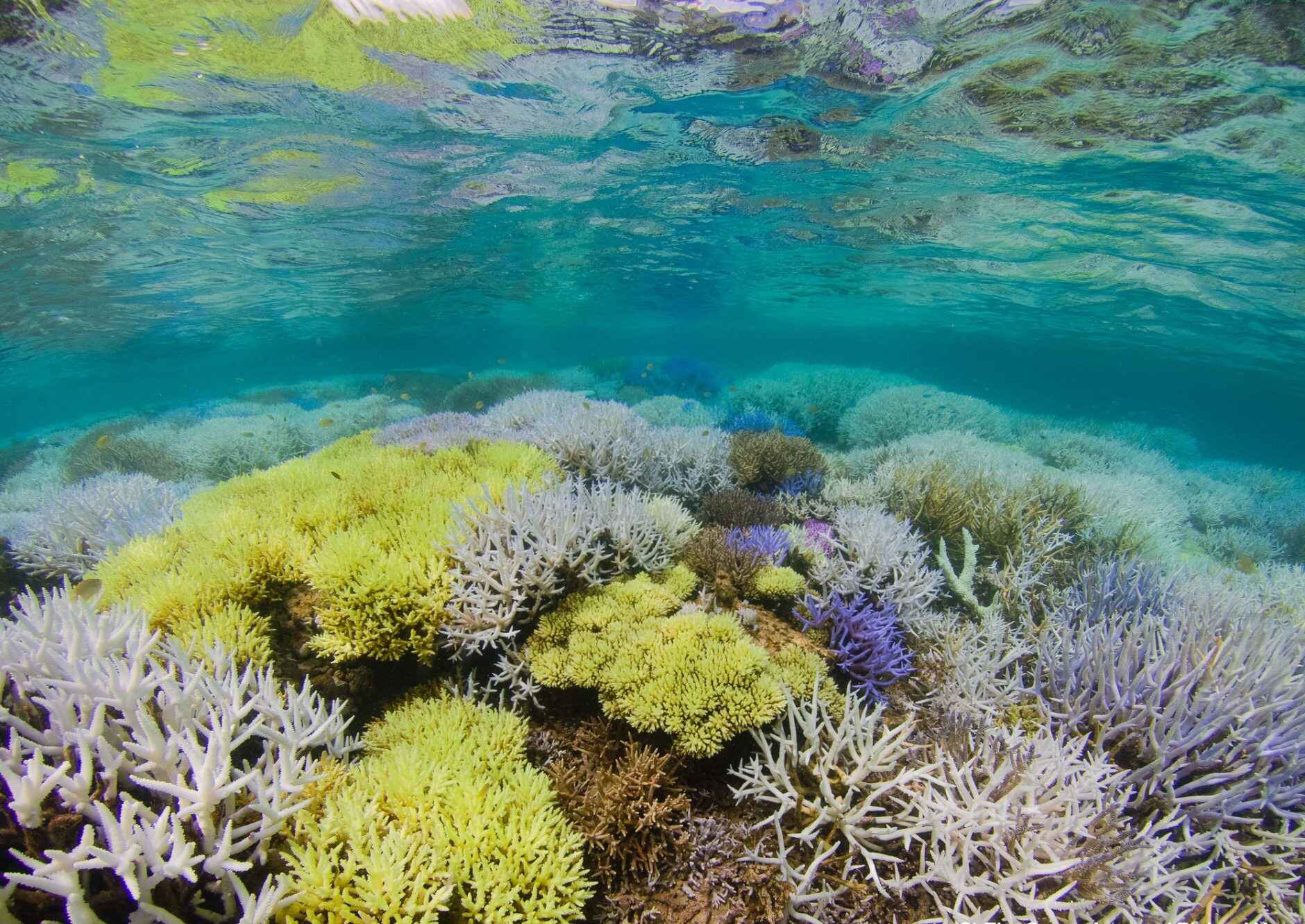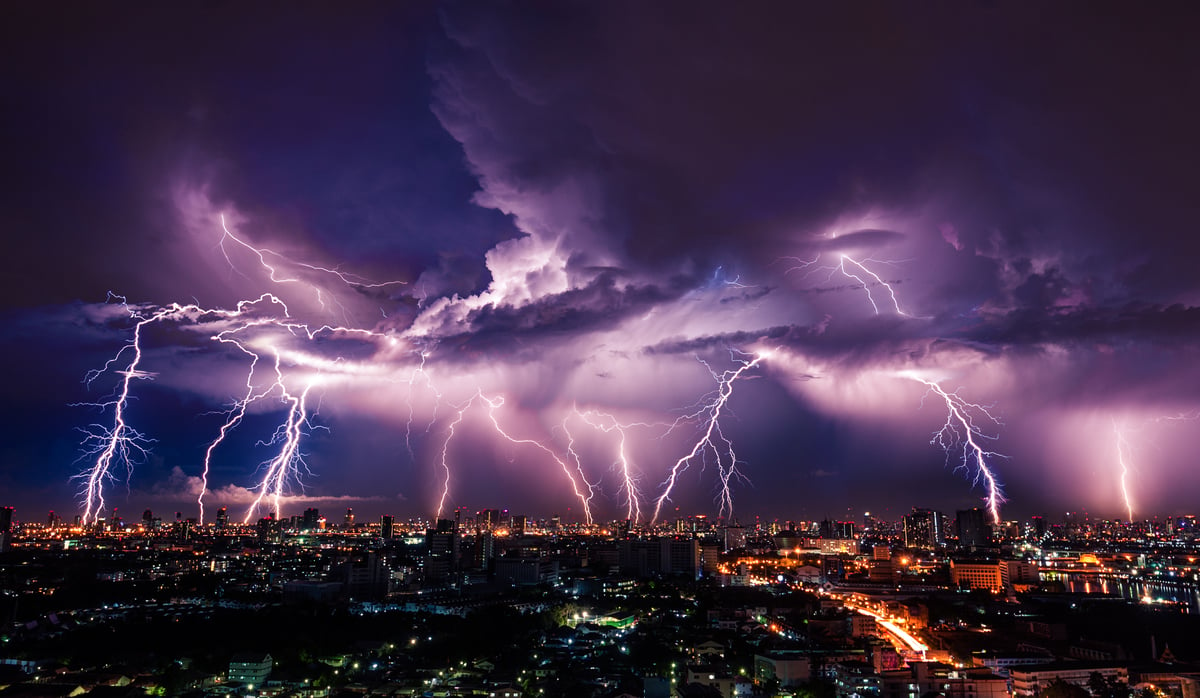
New Caledonia Barrier Reef is a natural wonder that never fails to mesmerize explorers and nature enthusiasts alike. Stretching over 1,600 kilometers along the coast of New Caledonia in the southwestern Pacific Ocean, this vibrant ecosystem is not only the world’s second-largest barrier reef but also a UNESCO World Heritage site. While it may be overshadowed by its famous neighbor, the Great Barrier Reef, the New Caledonia Barrier Reef offers its own unique charm and boasts a plethora of mind-blowing facts that make it a true marvel of nature. In this article, we will delve into 17 fascinating facts about the New Caledonia Barrier Reef that will leave you in awe of its beauty, diversity, and ecological significance.
Key Takeaways:
- The New Caledonia Barrier Reef is the second largest coral reef system in the world, offering diverse diving experiences and a haven for rare and endemic species. It’s a must-visit for nature lovers and underwater photography enthusiasts.
- This UNESCO World Heritage Site is home to over 9,000 species and faces threats from climate change and human activities. It’s a living laboratory for coral research and a vital cultural and economic asset for New Caledonia.
The New Caledonia Barrier Reef is the second largest coral reef system in the world.
The New Caledonia Barrier Reef, located in the South Pacific Ocean, is an astonishing natural wonder. Stretching over 1,500 kilometers, it is the second largest coral reef system on the planet, following the Great Barrier Reef in Australia. Its immense size and biodiversity make it a prime destination for divers and nature enthusiasts.
It is a UNESCO World Heritage Site.
The New Caledonia Barrier Reef was designated as a UNESCO World Heritage Site in This recognition highlights its exceptional universal value and the need to protect its fragile ecosystem. The reef supports a diverse range of marine life, including rare and endangered species, making it a crucial site for ecological conservation.
The waters surrounding the reef are home to over 9,000 species.
The New Caledonia Barrier Reef is a biodiversity hotspot, teeming with marine life. Scientists estimate that there are over 9,000 different species living in and around the reef, including fish, coral, mollusks, and sea turtles. The vibrant colors and incredible variety of species make diving and snorkeling in these waters an unforgettable experience.
The reef is known for its exceptional water clarity.
One of the remarkable features of the New Caledonia Barrier Reef is its crystal-clear waters. The visibility is often extraordinary, reaching up to 30 meters or more. This unique clarity allows divers to fully appreciate the stunning marine biodiversity and intricate coral formations that thrive in these pristine conditions.
The New Caledonia Barrier Reef is a haven for rare and endemic species.
Within the reef, numerous species are found nowhere else on Earth. These endemic species have evolved and adapted to the specific conditions of the reef over countless years. From colorful reef fish to unique coral species, the New Caledonia Barrier Reef is an important habitat for the survival of these rare and specialized organisms.
It offers diverse diving experiences for all skill levels.
Whether you are a beginner or an experienced diver, the New Caledonia Barrier Reef caters to all skill levels. From shallow lagoons with gentle currents to deep vertical drop-offs, there is something for everyone. Dive sites such as the Prony Needle and Hienghene Pinnacle offer thrilling underwater formations and encounters with marine life.
The reef is a paradise for snorkelers.
Snorkelers can also marvel at the beauty of the New Caledonia Barrier Reef. With calm and shallow areas, snorkeling allows visitors to get up close to the colorful coral gardens and swim alongside tropical fish. The clear waters and abundant marine life make snorkeling an accessible and enjoyable activity for all ages.
The New Caledonia Barrier Reef is a hotspot for marine research.
Scientists and research institutions from around the world flock to the New Caledonia Barrier Reef to study its unique ecosystem. Ongoing research focuses on coral health, climate change impacts, and the conservation of endangered species. The knowledge gained from these studies contributes to global efforts in preserving and understanding coral reefs.
The reef faces threats from climate change and human activities.
Like many coral reefs worldwide, the New Caledonia Barrier Reef is under threat from climate change and human activities. Rising sea temperatures, ocean acidification, overfishing, and pollution pose significant challenges to the health and sustainability of the reef. Efforts are being made to raise awareness, implement conservation measures, and mitigate these threats.
The reef is an important cultural and economic asset for New Caledonia.
The New Caledonia Barrier Reef holds immense cultural and economic significance for the people of New Caledonia. It is deeply connected to the Kanak culture, with traditional practices and knowledge passed down through generations. Additionally, the reef supports a vibrant tourism industry, providing employment and income to local communities.
It is a haven for sea turtles.
Sea turtles find sanctuary in the New Caledonia Barrier Reef. These graceful creatures rely on the reef for nesting, foraging, and shelter. The reef offers vital habitats for several species of sea turtles, including the endangered green turtle and the critically endangered hawksbill turtle.
The New Caledonia Barrier Reef inspired Jacques Cousteau.
The legendary oceanographer Jacques Cousteau was captivated by the beauty and diversity of the New Caledonia Barrier Reef. His exploration and documentation of the reef significantly contributed to raising awareness about its ecological importance. Today, his legacy continues to inspire and educate others about the wonders of the underwater world.
The reef is home to the world’s largest colony of nautilus.
The New Caledonia Barrier Reef is not only inhabited by colorful fish and coral but also by the mysterious nautilus. The nautilus is a prehistoric creature that has remained relatively unchanged for millions of years. The reef is home to the world’s largest colony of nautilus, and spotting these enigmatic creatures is a rare and fascinating experience.
The reef offers opportunities for eco-tourism and sustainable development.
Recognizing the significance of the New Caledonia Barrier Reef, eco-tourism initiatives have been developed to create sustainable economic opportunities. These initiatives aim to promote responsible travel, biodiversity conservation, and support local communities. By choosing eco-conscious activities and supporting ethical tourism practices, visitors can contribute to the long-term preservation of the reef.
The reef is a living laboratory for coral research.
The New Caledonia Barrier Reef is a living laboratory for scientists studying coral reefs. Its diverse range of coral species provides valuable insights into the biology and adaptation of these delicate organisms. Researchers use the reef as a model system to better understand the impacts of climate change and develop strategies for coral reef conservation.
The New Caledonia Barrier Reef is a paradise for underwater photography.
With its vibrant colors, abundant marine life, and exceptional water clarity, the New Caledonia Barrier Reef offers endless opportunities for underwater photography enthusiasts. Capture the beauty of the reef and its inhabitants, from colorful coral formations to graceful sea turtles, and create stunning images that showcase the splendor of this natural wonder.
The New Caledonia Barrier Reef is a bucket-list destination for nature lovers.
For nature enthusiasts, the New Caledonia Barrier Reef is a must-visit destination. Immerse yourself in the captivating underwater world, explore its hidden treasures, and witness the remarkable biodiversity that thrives within the reef. Whether you are an avid diver, snorkeler, or simply appreciate the wonders of nature, the New Caledonia Barrier Reef is a place of unparalleled beauty and discovery.
Conclusion
The New Caledonia Barrier Reef is truly a natural wonder that captivates the imagination. With its breathtaking beauty, rich biodiversity, and unique attributes, it is no wonder that it is considered one of the most remarkable wonders of the underwater world. From its sheer size to the diverse marine life that calls it home, the New Caledonia Barrier Reef continues to awe and inspire visitors from around the globe. Whether you are a nature lover, a diver, or simply seeking adventure, exploring this incredible reef is an experience you won’t soon forget.
FAQs
1. How big is the New Caledonia Barrier Reef?
The New Caledonia Barrier Reef is the second-longest double-barrier coral reef in the world, stretching over 1,600 kilometers.
2. What makes the New Caledonia Barrier Reef unique?
The New Caledonia Barrier Reef is known for its high levels of endemism, meaning it is home to many species that are found nowhere else in the world.
3. Can I snorkel or dive in the New Caledonia Barrier Reef?
Absolutely! Snorkeling and diving in the New Caledonia Barrier Reef offer unparalleled opportunities to explore its stunning coral formations and encounter a wide variety of marine life.
4. Are there any restrictions or regulations for visiting the New Caledonia Barrier Reef?
Yes, there are regulations in place to protect this fragile ecosystem. It is important to follow designated snorkeling and diving areas, avoid touching or damaging the coral, and adhere to any guidelines provided by local authorities.
5. Can I visit the New Caledonia Barrier Reef as a non-diver?
Absolutely! There are plenty of tour operators that offer boat trips, glass-bottom boat tours, and other non-diving activities for those who prefer to stay above the water.
6. Is the New Caledonia Barrier Reef affected by climate change?
Like many coral reefs around the world, the New Caledonia Barrier Reef faces threats from climate change, including rising sea temperatures and ocean acidification. Efforts are being made to mitigate these impacts and protect the reef’s delicate ecosystem.
7. Can I visit the New Caledonia Barrier Reef at any time of the year?
Yes, the New Caledonia Barrier Reef is accessible year-round. However, the best time to visit is during the dry season, which runs from May to October, when the weather is pleasant and the water visibility is at its best.
8. Are there accommodation options near the New Caledonia Barrier Reef?
Yes, there are various accommodation options available, ranging from luxury resorts to budget-friendly hotels, located in and around the coastal areas of New Caledonia.
9. Are there any guided tours available for exploring the New Caledonia Barrier Reef?
Yes, there are numerous guided tours available that offer a range of experiences, from snorkeling and diving expeditions to educational marine eco-tours.
10. Is the New Caledonia Barrier Reef a UNESCO World Heritage Site?
Yes, the New Caledonia Barrier Reef was inscribed as a UNESCO World Heritage Site in 2008, recognizing its outstanding universal value and the need for its protection.
Dive deeper into the wonders of our oceans by exploring the incredible marine biodiversity found in India's Gulf of Mannar Marine National Park. Discover the alarming effects of coral bleaching on these delicate ecosystems and learn about the crucial efforts being made in marine conservation to protect them for future generations.
Was this page helpful?
Our commitment to delivering trustworthy and engaging content is at the heart of what we do. Each fact on our site is contributed by real users like you, bringing a wealth of diverse insights and information. To ensure the highest standards of accuracy and reliability, our dedicated editors meticulously review each submission. This process guarantees that the facts we share are not only fascinating but also credible. Trust in our commitment to quality and authenticity as you explore and learn with us.


